|
|
| Bon
Culture |
Much is written about this indigenous
pre-Buddhist culture and religion of Tibet that
is speculative.
|
| It is challenging to create a narrative that
presents a well-rounded perspective of these ancient
peoples, due to several facts, some of these being
that the roots of Bon existed as an oral tradition,
that the ancient Bon later developed the spoken
and written language of Zhang Zhung that was thought
to be extinct or even mythical, and that the complex
influences between Bon and Buddhist cultures have
blurred the lines of distinction between these
two. The Bon culture as narrated by the Bon, speak
of its roots spanning 18,000 years, and there
is growing archeological evidence to substantiate
this. |
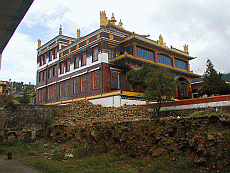 |
| |
Many references exist in the vast
reservoir of Tibetan scriptures but not until
the American John Vincent Bellezza began to do
extensive research beginning in the early 1990’s
did overwhelming evidence of this territory the
size of Texas and California combined begin to
take shape. In his book, Tibetan Stones of Time:Exploration
of the Ancient Bon Kingdom of Zhang Zhung, Bellezza's
findings date the stone remains to the Iron Age,
a time span from the First millennium BC to the
period of the first Buddhist Kings of the 7th
century AD. Most recently, the German scholar
Bruno Baumann has also traveled to this region
to experience first hand evidence of these people
within the rock art. An excerpt from the recent
article by Juergen Kremb Baumann's new book, The
Silver Palace of Garuda, The Discovery of Tibet's
Last Secret, reads as follows.“…the remnants of
ancient foundations are everywhere, and the remains
of ramparts extending several hundred meters line
the top of the cliff. Locals call the mountain
“Khardong,” or “In the View of the Palace.” Baumann
is quoted as saying, “this must have been where
it all began, the cradle of Tibetan culture, in
a bleak, high valley settled by nomads, at least
1,000 kilometres (622 miles) from Lhasa. The cradle
of Tibetan culture doesn't lie in Lhasa,” says
Baumann, as he descends from Mt. Kailash, “but
in the distant past of the Zhang Zhung kings.”
Bon has survived continuously as a living tradition
especially among the lay people who despite the
over whelming odds, have passed on their culture
and religious traditions from generation to generation.
As a tribal people profoundly dependent upon their
environment, such interconnected awareness permeated
every aspect of life. This profound relationship
with nature and the five elements of earth, air,
fire, water, and empty space is found amongst
the worlds’ indigenous people. When disturbances
occur and afflictions manifest within these complex
relationships, a shaman or Bon priest responds
by way of ritual to facilitate the healing of
physical and environmental as well as spiritual
distress by mediating between the unseen forces
to restore harmony.
Scholars have also agreed that Tibetan prayer
flags originate from the ancient Bon culture.
Symbolizing the union and balance of the five
elements, prayer flags are a principle way of
transmitting prayer, and acknowledging the divine. |
| |
| Bon History |
| |
Much of Bon history can be viewed as paradoxical,
due in part to the nature of the narrative being
slowly reshaped by the influence of Buddhism appearing
in Tibet in the 7th century. History retold by
a Bonpo, as a follower of Bon is called, will
speak of lands, by names that have long been forgotten
by the modern world. This veiled mystery is a
source of fascination to scholars and student
alike presenting the earnest seeker a rich opportunity
for future discovery.
For example, the Bon religion is believed to have
originated from the land of Olmo Lungring in Tazik.
Many modern day scholars recognize Tazik as the
present day Tajikistan, which is situated northwest
of the once thought to be mythical Kingdom of
Zhang –Zhang, which is West of Tibet, near Mt
Kailash, a holy place for many religions. As the
teachings flourished throughout the ancient empire
of Zhang –Zhung they were brought to Central Tibet
sometime before 600 A.D.
|
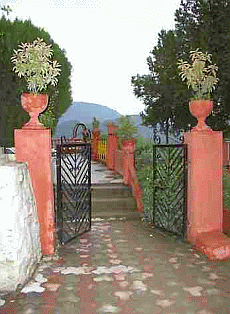 |
| |
| Tibetan Buddhism, distinct from
its Indian and other Asian counterparts, arguably
owes much of this uniqueness to the influence
of Tibetan Bon. Many native Bon elements are obvious
within Tibetan Buddhist rituals, and in turn,
the New Bon of today reflects Buddhist influence
as well. There remain many distinctions within
these two religions, but both share a common and
ultimate commitment to the enlightenment of all
sentient beings. Integral to the religious practice
of Bön is a heightened sense of esthetics. Whether
it be through the arts, philosophy, theology,
mudras, mantras, ritual, dance or astrology, examining,
perceiving and experiencing our intrinsic relationship
to nature, and to the natural mind is an ever-
evolving unfoldment of revelation and practice
whose transforming mere existence into an experience
of living with universal wisdom and compassion
for all. |
| |
Bon Spirituality
Within present day Bon, are three classifications
including Old Bon, Yungdrung Bon, and New Bon.
Yungdrung doctrine, or otherwise known as Eternal
Bon, is dedicated to perpetuating the teachings
of their founder Tonpa Shenrab Miwoche, who occupies
a preeminent position in Bon culture similar to
that of Sakyamuni in Buddhism. The teachings and
practice of Yungdrung Bon contain the Nine Ways
or the Nine Gradual Views of Bon, the Four Portals
and Treasure as the Fifth, and the External, Internal
and Secret Bon. |
| |
Bön, was officially recognized in 1978 by the
Dalai Lama as the fifth wisdom school of Tibet.
The Nine Principles of Bon |
 |
| |
1. Cha Shen Thegpa:
the Way of Prediction - Describes the four methods
of prediction; astrology, ritual examination of
causes, and prophecy
2. Nang Shen
Thegpa: the Way of the Visual World -
explains the psychophysical universe, as relating
to the origin and nature of gods and demons living
in the world and the methodology of exorcism and
the liberation of beings through energetic exchange
3. Trul Shen Thegpa: the Way
of Illusion- rites for dispersing adverse powers
4. Si Shen Thegpa: the Way of
Existence –describes the phases after death and
the methods for guiding living beings toward final
liberation
5. Ge Nyen Thegpa:
the Way of a virtuous layperson's path, offers
ten principles of practices for well being, and
the practice of fasting
6. Drang Song
Thegpa: the Way of Monkhood - explains
the rules of monastic conduct and the first level
of tantric practices
7. A Kar Thegpa:
the Way of Pure A or Primordial Sound – elucidates
higher tantric practices and the necessary rituals
of visualization as well as the tantric practice
of che rim, explaining how to cut the bonds of
rebirth, death and the intermediate state
8. Ye Shen Thegpa: the Way of
Primordiality – expounds upon the essential reasons
for having the appropriate master, place and occasion
for tantric practice and emphasizes the perfection
tantric process dzog rim, and obtaining the illusory
body, gyu lu.
9. La na me ba:
the Unsurpassable Way – details the doctrine,
views, meditation and behaviour of the Great Perfection,
Dzogchen |
| |
| Yungdrung Bon founder Tonpa
Shenrab Miwoche |
| |
A photograph of the statue of Tonpa Shenrab
that is within the Bon Temple at the Menri Monastery
in Dolangi, India.
According to Bon texts, Tonpa Shenrab Miwoche
was born a prince, married and had children. At
the age of 31, he renounced worldly life to teach
the Yungdrung Bon doctrine.
Tonpa spent his whole life and all his efforts
to propagate the Bön religion. These were obstructed
by the demon Khyabpa Lagring (Khyab-pa Lag-ring),
that fought to destroy or impede Tonpa Shenrab’s
work; until eventually the demon was converted
and became his disciple.
|
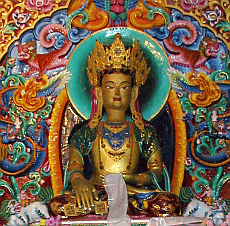 |
| |
| Once while pursuing the demon to
recover his stolen horses Tonpa Shenrab arrived
in present-day western Tibet. This was his only
visit to Tibet. On this occasion he imparted some
instructions on the performance of rituals, but
on the whole he found the people unprepared to
receive more teachings. Before leaving Tibet he
prophesied that all his teachings would flourish
in Tibet when the time was ripe. Tonpa Shenrab
passed away at the age of eighty-two. |
| |
Symbology in Yungdrung Bon
Quintessential to the Yungdrung Bon is the symbol
of the yungdrung, or swastika. The swastika in
general is found throughout antiquity. The right
turning swastika is solar, while the leftward
turning swastika is lunar. Defined within the
language of Sanskrit to mean, “so be it” or good
fortune, there is no connection to Hitler's Third
Reich swastika and its ascribed meanings. In the
Tibetan Bon language of Zhang Zhung, its meaning
is translated as (yung) no beginning, and (drung),
no end. This Bon belief in the left-turning primordial
spiral of the universe is why the Bon practitioner
circumambulates holy mountains, shrines and turns
a prayer wheel, counter-clockwise. To the Bonpo,
holy days and their sacred rituals are based on
the lunar calendar. Bon cosmology speaks of the
universe being born from a single egg. The Bon
spiral in all its essence is primordial mother.
Noteworthy is the fact that our earth, moon and
solar system spin counter-clockwise, and that
scientists theorize the nebula that created our
universe also was spinning counter clock-wise
and thus generated the spin of our solar system.
The moon not only rotates counter-clockwise around
the earth, it does so in the shape of an oval,
or egg- shape.
Within the Yungdrung are the five directions of
the universe. The four directions of the symbol
are the corners, with the middle as fifth, indicating
the structure of all the energies of the universe.
The yungdrung can be found in the right hand of
Tonpa Sherab in the form of a sceptre, otherwise
known as a chagshing. One Yungdrung symbolizing
the outer teachings, the other the inner teachings
and the middle representing the teachings of Dzochen.
Needless to say, it is profoundly intriguing that
Tonpa Shenrab introduced Yungdrung Bon 18,000
years ago with a cosmic map that scientists today
are only beginning to discover! |
| |
| Also important to mention is the holy Mt. of
Kailash, or “Yungdrung Gutseg”. The Zhang Zhung
translation means, “nine swastikas stacked one
above the other”. Correspondingly, are nine stacked
below in the underworld. Mt. Kailash is revered
by many traditions within its region and is given
many names such as, “the navel of the world”,
and notably, the Axis Mundi or literally, the
axis of the world. According to Barbara Walker
in her book, The Woman's Dictionary of Symbols
and Sacred Objects, the mystical nature of the
human body's spinal column is referred to as the
merudanda “as an inner, individual echo of the
cosmic axis mundi.” Noteworthy is the way the
body's cosmic life force supposedly coils around
and up the merudanda in a double spiral, one solar
and the other lunar. One is reminded of the Buddhist
pilgrims’ clockwise and Bons’ counterclockwise
circumambulation of their holy Mt Kailash. As
well, this reflects the design of the double helix
of DNA. And so it is that the pilgrims’ mystical
path is simultaneously generating cosmic life
force internally and assisting the world’s cosmic
evolution externally, in this dual circumambulating
of “the navel of the world”. |
 |
| |
Acknowledgement
The above is sourced from Bon Future Fund, a group
specialising in "Investing in the higher
education of Bon children". You can find
our own comments below plus other links, but first
we would like you to click on the link and visit
their website for more information about Bon Culture
today:
http://www.bonfuturefund.org/wp/about-the-bon/
China Expats have slightly edited and republished
their main historical article for your immediate
information under Collective Commons 3 licence. |
| |
| Ancient Bon Culture |
| |
The Bon Future Fund
have given us a great introduction to Bon Religion,
but there are words left unsaid, especially when
viewing from a wider perspective.
If you delve a little deeper into Bon, then one
of the first surprises is that there are very
close links regarding the stories told in Bon,
and those of early Christianity. So much so there
has to be a crossover or parallax.
We can step back in time a little further, and
note great advances in philosophy in both West
(Greece) and East (Buddhism). Existing religions
of that time were Hindu, Egyptian, Greco, and
Judaism. Shamanism has always existed, as has
the local worship or reverence for nature and
naturally occurring things such as rivers and
forests. There would also be contemporaneous ethnic
South American cultures and associated religions.
|
| |
Unfortunately it is not so simple, as
Gaia (Mother Earth as I call her), has two
main centres - one in the Himalayas (Probably
correctly Mt Kailash), and the other based
at the Temple of the Sun - which is now
sunken beneath Lake Titicaca separating
Bolivia and Peru. Both are very high places,
and endure 1, 000 year cycles of dominance,
which in turn are composed of 2 x 500 year
cycles called Pachakuti. Many of the world's
spiritual leaders, as well as indigenous
teachers, acknowledge that the energy of
the planet shifted in 1987 from the masculine
energies of Tibet to the feminine energies
of Peru. You can learn more about the feminine
side of the world here:
http://www.crystalinks.com/laketiticaca.html
and here:
http://www.world-mysteries.com/mpl_6.htm
This brings us directly to the representation
of Ying and Yang, which signifies a world
divided equally into male and female halves,
each with a centre of power in the other
segment.
|
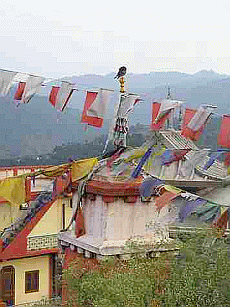 |
|
| |
Having lived in China for 8-years
now, the author notes that everything you expect
is reversed in China. In Uk if you go to flick
a switch, then it works the opposite way in China
(Usually down in UK and up in China - a kettle
for instance). The sides chosen by men and women
are also reversed. I could understand this if
we were crossing the equator, but we are not;
we are simply on the other side of the world (Lake
Titicaca is currently just in the Northern hemisphere
by the way). I have taken this line of thinking
a lot further in order to try and understand more
about what is written on this page, and you may
like to play with the associated ideas also?
Just before we go on to the next bit, it is very
interesting to note that all ancient world cultures
recount 3 topics:
1. The
Deluge or great flood
2.
Being saved/educated by extraordinary beings -
typically white people with blue eyes and very
tall with very long life-spans (These are not
Scandinavians nor Europeans) and the disappearance
of existing civilisations.
3.
A Creation Story.
I have no intention of descending to a crackpot
Atlantis theory, but do note the two centres of
this modern world are located at the highest places
on their respective continents, and I wonder why? |
| |
| China Expats would seriously
like to take this discussion forwards, as we believe
our future is as reflected in the lessons of the
distant past. We also have a lot more information
concerning the Bon Culture in particular, as aesthetic
thought in general. We would very much like to
take this forwards as a blog or community subject
- but this is up to you to participate. |
| |
However, our focus must return to the
Bon People and their 18, 000 year history
= 16, 000 BC. That is before the end of
the last Ice-Age Circa 10, 000 BC.
Like early followers of God and Allah, the
Bon Culture that preceded them by millennia
also sought sanctuary with one 'super-being'
or 'Cosmic Awareness'. It would probably
be safe to assume the Egyptians and those
who came after (Greeks and Romans) attempted
to rationalise the gap between a 'super-being'
and folk religion; thus creating a Pantheon
of gods - each with special powers or interests
regarding humanity.
Both Buddhism and Taoism also have pantheons,
but these are not formally worshipped in
general, but are ways to walk a path to
truth and enlightenment. Or maybe it's just
all another form of control?
|
 |
|
| |
If I were to agree
with common thinking that 'god' created 'man'
in his own image - and I can agree with that;
then I would have to add that since that time
of creation - 'man' has relentlessly re-created
'god' in his own image also. I would prefer to
know the whole truth, and enquirers could find
no better starting place than the ancient Bon
Culture and their beliefs.
Summary
The Bon Culture is by far the oldest extant religion
on earth today, and second only in cultural longevity
to the Maori's of New Zealand (Circa 30, 000 BC).
Unfortunately, and like Celtic traditions and
folklaw, nothing was ever written down - at least
until fairly modern times. However, it is probably
correct to state that the basis of all non-folk
religions and doctrines alive in the world today
share common roots with the Bon Culture, and perhaps
it's antipathies in South America? |
| |
|
|
Further Reading:
We would normally recommend Wikipedia as first choice
for more information, but this time we do not - as they
focus mainly on recent history - nominally 7th Century
AD to present day = very shallow:
http://en.wikipedia.org/wiki/Bön
Bon Future Fund (Whom we have absolutely no relationship
with), offer many more links and courses for your self-development.
Serious students and casual enquirers should begin their
journey with Bon
Future Fund homepage
However we also note their backers are big-business
based in USA and they take an anti-Chinese stance (Probably
USA encouraged for monetary or political gain?), whereas
China Expats believe they should be working with the
Chinese government in Beijing for the greater good of
all concerned - and especially the Chinese children
in their care. |
|
This information is as supplied by Bon
Future Fund, as dated
May 2010 or later, and/or other reliable sources; +
China Expats.
Disclaimer:
Please check this information yourself as it may alter
without notice, and whilst we try our best to ensure
it is correct, please do not hold us responsible for
any errors - this is intended as a simple guide only |
|
| Search
this Website |
|
|
| Our
Friends |

Professional
Visa Services
Company
Formation Packages
.
|
Excellent
& Free Online Chinese Language Portal

Thousands of free print-friendly Chinese reference sheets,
tests and revision aids.
Easy Learning format &
Listen to Spoken Words |

British Foreign Office
Resource and Advice for Travellers Worldwide |

Chinese Embassy in UK
Information About China
International Relations
Visa & Consular |

UK Embassy in China
Information About UK
International Relations
Visa & Consular |

|
Excel
Education |
Languages Courses
Study Abroad
Employability
Summer Camps
Information for Teachers |
|

Excellent and relaxing base to
explore this most beautiful of regions in all China! |
Down The Road.org
How We Traded Our Ordinary Lives For a Global Bicycle Touring Adventure

See
Us in China |

Empowering Underprivileged Children
& Their Communities = Worldwide |
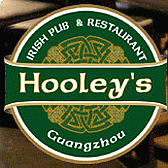 |

Based in Shangri-la,
Yunnan
Province
Dedicated to Exploring Remote Areas of China
Committed to Nature Conservation and Preserving Ethnic
Cultures & Traditions
|

Based in Xi'an,
China's Premiere Travel Agency and International Travel
Community -
Committed to providing:
Best travel deals & current information for all
International Travellers |

Pearl Dragon
Vast
Online Trading and Information Resource
Link goes to Chinese Tourism and Galleries Section |
|